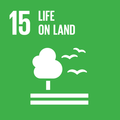Mylo is a plant-based leather alternative made using mycelium, the root structure from mushrooms.
Bolt Threads have designed a vegan alternative to leather that is produced using mycelium, the root structure in mushrooms and other fungi. Using technology developed by Ecovative, this new leather is grown in a lab, rather than a field. In a highly controlled environment, they inject a bed of discarded corn stalks with mycelium, which then grows into an interconnected, robust material. This material is then pressed at a high heat to kill the fungus and prevent additional growth, and to remove excess moisture, after which it is tanned and dyed, just like conventional leather.

Mylo was debuted in early 2018, when Bolt Threads paired with high-profile fashion designer Stella McCartney to create a handbag to be showcased at the Victoria and Albert Museum in London as part of a special exhibition on nature in fashion. It has recently become commercially available in limited quantities through a partnership with Portland based designers Chester Wallace.
Why you should care
An average piece of leather can have a long and complex history before it even reaches the shop floor. An opaque global supply chain makes understanding provenance associated environmental footprint extremely challenging. The traditional tanning and manufacturing process though is notoriously water and resource intensive, involving up to 40 litres of water per kilogram of leather produced. Bolt Thread’s process can produce a piece of material equivalent in size to a whole hide in around two months and requires significantly less water and energy.
How the Global Goals are addressed
Responsible consumption and production
Mylo is made from natural materials and is fully biodegradable under the correct conditions, unlike other leather substitutes like polyurethane, providing a sustainable end-of-life-process for products
Life on land
Mylo provides the durability and malleability of leather without the need to raise livestock, which comprises over a quarter of land use - leaving more space for conservation and regeneration.



